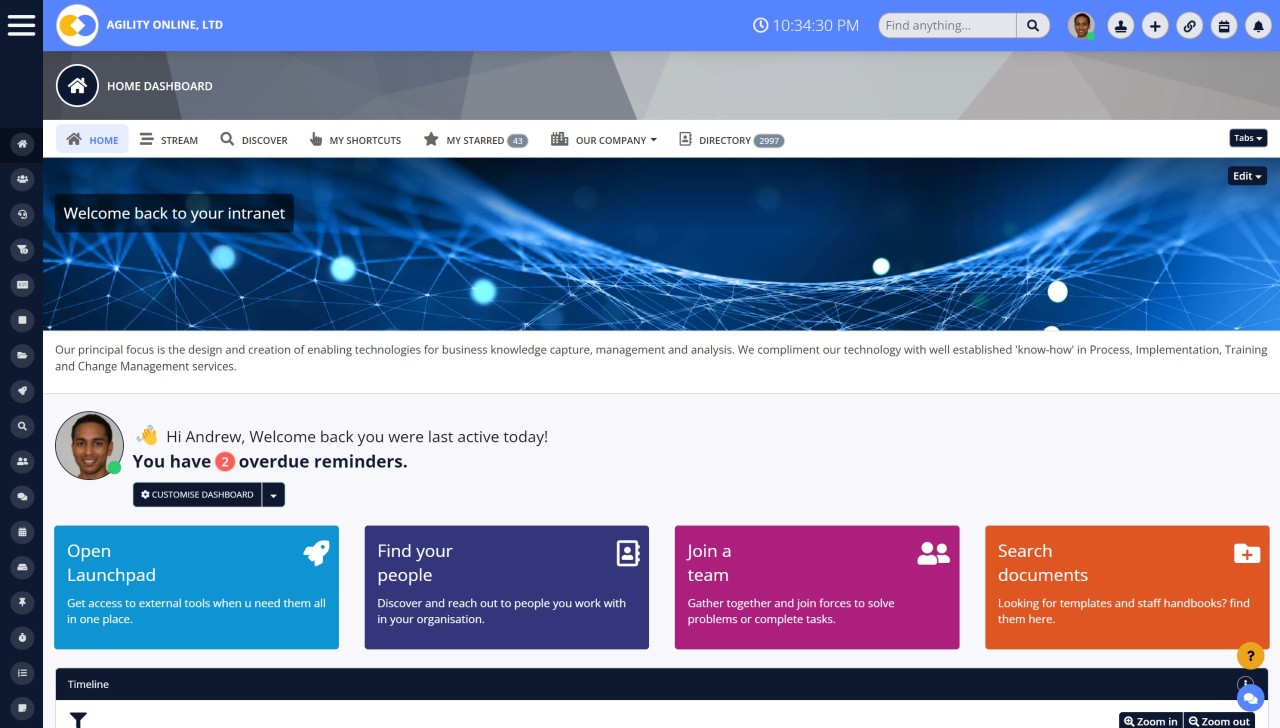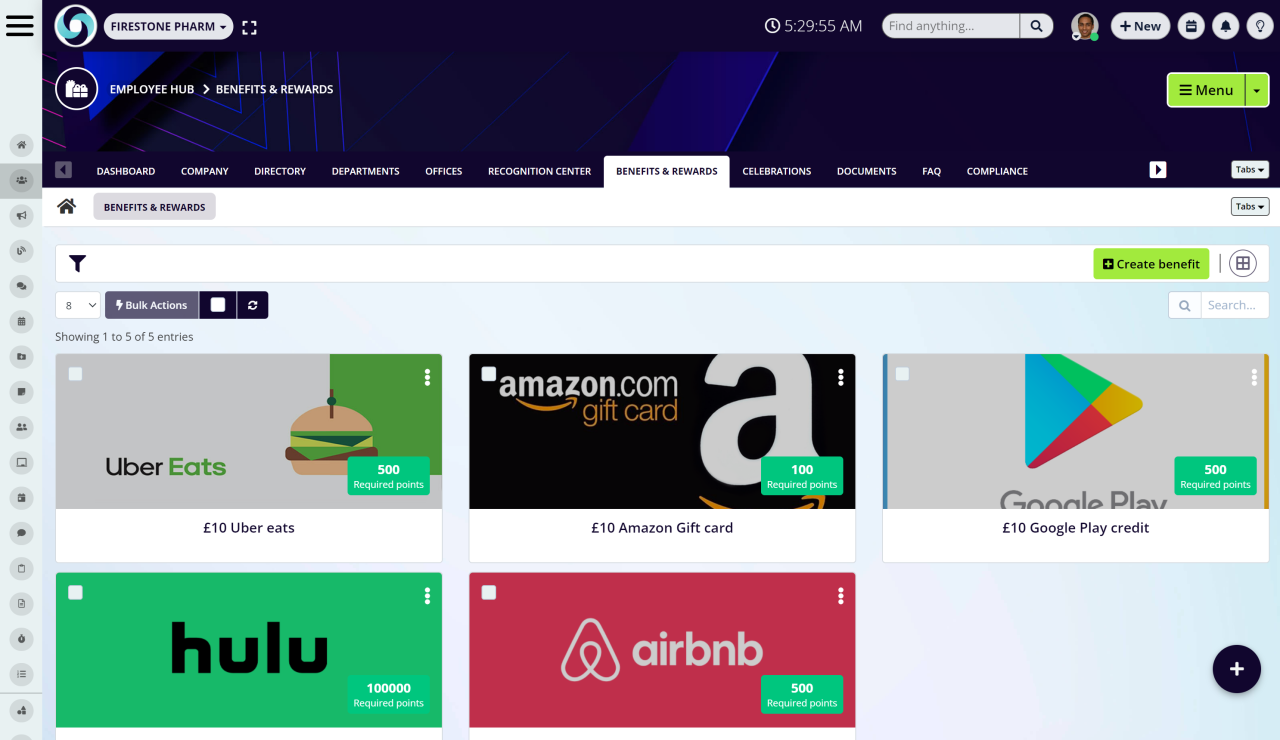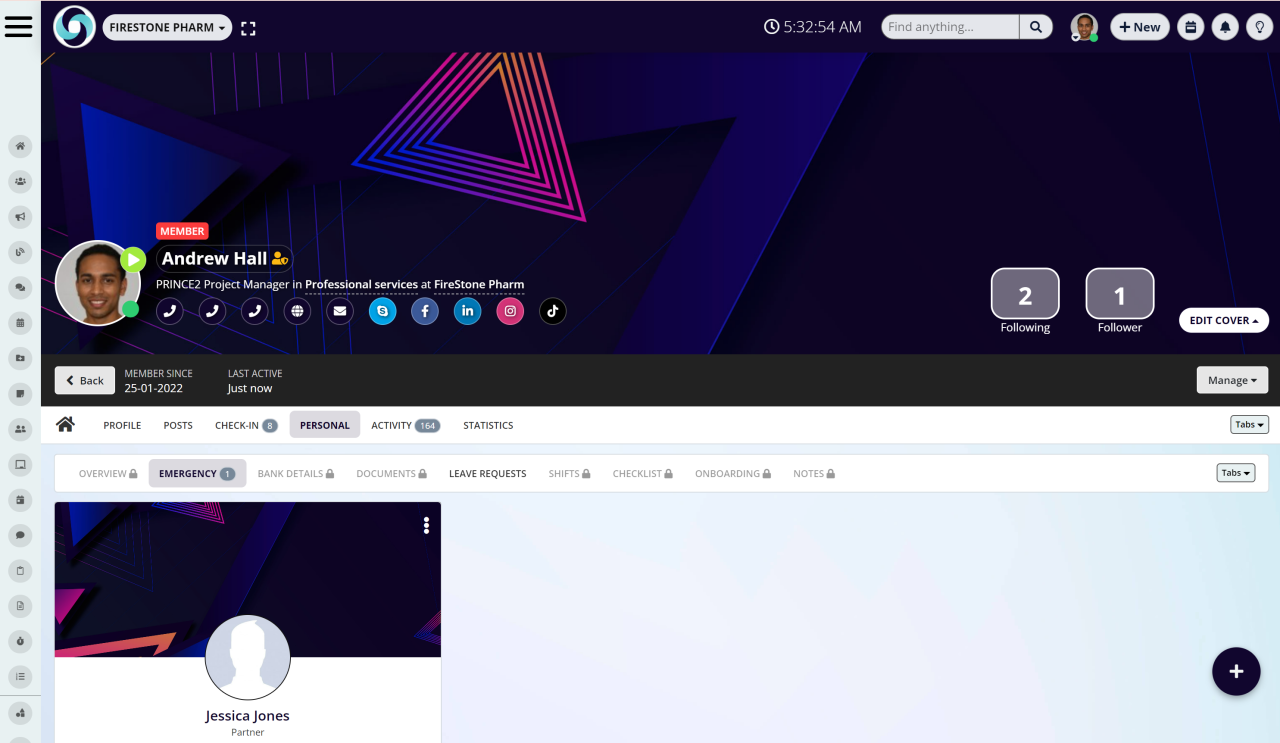Insight Blog
Agility’s perspectives on transforming the employee's experience throughout remote transformation using connected enterprise tools.
11 minutes reading time
(2244 words)
What is an employee portal or self service portal?
Employee self service (ESS) is technology that allows employees to handle a number of human-resources and administrative tasks on their own.
Employee self-service is an increasingly popular system which enables staff to manage their own payroll, benefits and other HR activities online with minimal involvement from the employer. It is designed to save companies time and money, as well as give employees greater control over their personal information.
Self-service functions range from viewing vacation and sick leave balances, accessing timesheets, submitting requests for payroll deductions, to updating contact details or personal preferences.
This technology also allows employers to decrease manual data entry tasks, as well as avoid potential compliance issues associated with manual processes of managing employee information.
Employee self-service has become a necessity for most organizations, for example, employee portal la fitness understand its immense value in enabling automatic updates on key HR records with accurate real-time data is extremely important in todays world.
What is employee self service portal and How does a employee self services portal work
The main questions is what is employee self service portal? An Employee Self Service (ESS) portal also known as a employee portal online is a web-based platform that allows employees to access and manage their personal and employment-related information. The portal can be accessed through a web browser and is typically secured with a login and password to ensure that only authorized individuals can access the information.
The ESS system is often integrated with other systems, such as HR Information Systems (HRIS) and leading ERP vendors and their system capabilities, to provide a comprehensive view of employee information and support end-to-end processes.
The system often sends notifications to the employee or administrator when some actions are made, or approvals are required.
And also give them the flexibility to access the information and perform actions at any time and from any location.
ESS portals can also be mobile-friendly, which can make it easy for employees to access their information and perform actions while on the go. This can help employees to stay engaged, be more productive and enhance their experience with the company.
How do employee self service portals work?
Employee self-service portals operate through a company's intranet or their HR web portal, accessible to users through a login provided during the HR system implementation. Upon logging into the Employee Self-Service (ESS) portal, users gain the capability to manage their job-related information. Most modern ESS portals now offer access via an HR app, enhancing the user experience across various devices.
This inclusive approach allows employees to update, change, or view their information seamlessly, regardless of the device they are using.
The self-service options typically cover various aspects, including:
- Pay information
- Benefits
- Holiday requests
- Performance evaluations
While these are common features, specific requirements for self-service HR may vary based on factors such as the organization's size, industry, and goals. Clearly defining these needs is crucial before selecting and implementing an ESS portal.
For small to medium-sized businesses (SMBs), an ESS integrated into a 'plug-and-play' HR system often suffices. These systems offer basic functionality like holiday requests and personal information updates, without compromising performance. There are excellent ESS modules tailored for SMBs, providing additional features such as document management and automation.
In contrast, larger organizations may require advanced functionality, such as Manager Self-Service (MSS). MSS enables team leaders to closely monitor aspects like team performance and attendance. The choice of an ESS solution should align with the specific needs and scale of the organization.
Why do business use an employee self services portal and what are the benefits
Businesses use an employee self services portal for a number of reasons. It allows them to provide employees with secure and convenient access to their pay stubs, PTO requests and other payroll-related activities. By streamlining these processes, companies are able to save on time and money. The self-service portals also increase productivity by providing employees with easy access to important company information such as policy documents, employee handbooks and training materials.
This helps ensure that everyone is working from the same set of guidelines, making it easier to implement new policies or make changes quickly across departments.
On top of that, the unified platform enables company administrators to track who has accessed certain information at any given time. Ultimately, employee self-service portals help businesses achieve greater efficiency and accuracy across all aspects of their operations.
Businesses use an Employee Self Service (ESS) portal for a variety of reasons, including:
- Increased Efficiency: ESS portals can save time and reduce administrative workload for HR and other staff members by allowing employees to update their own personal information and perform other tasks, such as requesting time off, without needing to involve HR staff. This can free up HR staff to focus on more strategic tasks, such as talent management and employee development.
- Improved Employee Experience: ESS portals give employees greater autonomy and control over their personal information, and allow them to easily access and manage their personal and employment-related information. This can improve employee satisfaction and engagement.
- Increased Data Accuracy: ESS portals allow employees to update their own records in real-time, which can help to avoid errors and ensure that the information HR and other staff members rely on is always up-to-date.
- Cost Savings: ESS portals can help to reduce the costs associated with managing employee information, such as printing and mailing pay stubs, and can also improve the efficiency of HR and other administrative tasks.
- Mobile access: ESS portals can be mobile-friendly, which can make it easy for employees to access their information and perform actions while on the go. This can help employees to stay engaged, be more productive and enhance their experience with the company.
- Better compliance: ESS portals may help to improve compliance with legal and regulatory requirements related to employee information, by providing a secure and centralized location for storing and managing employee data.
- Better collaboration: ESS portals can promote collaboration among employees and managers. As an example, managers can review their team's time-off requests, employees can see their colleagues' schedules and plan accordingly, and both can share information and feedback more easily.
Overall, ESS portals can offer many benefits to businesses by streamlining HR processes, empowering employees, and improving data accuracy. It can also help to save time and money, enhance compliance, and improve employee engagement and collaboration
What are the features of a Employee Self Services Portal?
Employee self services porta ls offer a convenient way for organizations to provide their employees with easy access to their personal and job-related information. Such portals typically feature real-time updates on salary, vacation and benefit information, as well as access to work emails, performance-related documents, training materials and team collaboration tools.
This can enable staff to quickly make sense of their working hours and unpaid leaves. Additionally, employee self services portals offer secure access to tasks like onboarding paperwork completion and leave requests processing.
It allows for greater flexibility in terms of managing personnel records digitally, which greatly reduces the amount of time paper-handling requires.
As a result, these efficient portals are increasingly being adopted by organizations looking to streamline job processes and improve communication between employers and employees.
An employee self-service (ESS) portal is a web-based application that allows employees to perform certain HR-related tasks and access information related to their employment. Here are a few other common features of an ESS portal include:
- Personal information management: Allows employees to view and update their personal information, such as contact details and emergency contact information.
- Time and attendance: Allows employees to view and request time off, request schedule changes, and view their attendance records.
- Payroll and compensation: Allows employees to view their pay stubs, W-2 forms, and other payroll-related information.
- Benefits management: Allows employees to enroll in or make changes to their benefits, such as health insurance and 401(k) plans.
- Training and development: Allows employees to view and register for training and development opportunities.
- Performance management: Allows employees to view their performance reviews and goals, and provide feedback on their performance.
- Company news and announcements: Allows employees to view and stay informed about company news and announcements.
- Some ESS may also include a employee directory, company's policies and procedures, a suggestion box or feedback system.
How can businesses improve their Employee Self Services
Employee Self Service (ESS) can be a great tool for businesses when utilized properly. An Employee Self Service platform can help to streamline processes and communications between employers and employees, eliminating costly paperwork and manual tasks.
It can also help to improve efficiency and accuracy of company-wide tasks like tracking attendance or managing payroll in an automated fashion.
Businesses looking to upgrade their ESS should focus on providing easy access to employee records, updating their messages with frequent changes, ensuring cross-platform compatibility, and improving the overall user experience.
- Streamline the login process: Make it easy for employees to access the ESS portal by implementing a single sign-on solution or integrating it with the company's existing login system.
- Make the portal mobile-friendly: Ensure that the ESS portal is accessible on mobile devices, as this will make it easier for employees to access the portal while on the go.
- Tailor the portal to the employee: Personalize the portal experience for each employee by providing them with relevant information and tasks based on their role and department.
- Provide comprehensive help resources: Ensure that employees can easily find answers to their questions by providing comprehensive help resources, such as a FAQ section or an online support system.
- Improve navigation: Make it easy for employees to find what they're looking for by improving the navigation and organization of the portal.
- Keep the portal up-to-date: Keep the portal up-to-date by regularly adding new features and functionality, and removing old and irrelevant information.
- Enable self-service options: Give employees the ability to perform certain tasks and access certain information without having to contact HR or other departments, such as updating personal information and requesting time off.
- Provide feedback and suggestions system: Allow employees to provide feedback and suggest improvements to the ESS portal, and actively act on this feedback.
- Monitor and track usage: Monitor and track usage of the ESS portal to identify areas that need improvement and to determine which features are most popular among employees.
- Communicate effectively: Communicate clearly to employees about the benefits of using the ESS portal and how to access it, so that they know what to expect and how to use it effectively.
Additionally, it is important that businesses invest in timely customer support so that any problems or difficulties with the ESS are quickly resolved. By taking these steps, businesses can reap the rewards of having an effective ESS system in place.
Top Employee Portal Software for Your Business
Choosing the right employee portal software for your business is a big decision. With so many options out there, it can feel overwhelming, but the good news is that there are plenty of great choices available. To help narrow down your search, we've compiled a list of the top 10 employee portal software programs.
This list includes software like Talismaengage, which offers an online collaboration hub that employees can use to access documents and tasks, as well as tools like Ceridian Dayforce My Vision that provides employee self-service features such as access to pay stubs and leave management. We also looked at highly rated options from companies like BreezyHR and Intranet Connections that offer everything from HR management to secure communication and project management features.
These choices give you the best in powerful features with cloud-based setup making them easy to use and manage.
There are many employee portal software options available on the market. Here are some popular choices that businesses can consider:
- AgilityPortal: This is a comprehensive platform that includes an employee self-service portal, as well as modules for Timesheets, workload, shift planner, and learning.
- Oracle HCM Cloud: This is another comprehensive HCM platform that includes an employee self-service portal, as well as modules for recruiting, onboarding, payroll, and benefits administration.
- Workday: This is a cloud-based HCM platform that includes an employee self-service portal, as well as modules for financial management, analytics, and recruitment.
- BambooHR: This is a cloud-based HR management software that includes an employee self-service portal, as well as modules for employee data management, time tracking, and performance management.
- ADP Workforce Now: This is a comprehensive HCM platform that includes an employee self-service portal, as well as modules for payroll, benefits administration, and time and attendance.
- UltiPro: It is a comprehensive HCM software that includes an employee self-service portal, as well as modules for payroll, benefits administration, and performance management.
- Dayforce: This is a cloud-based HCM platform that includes an employee self-service portal, as well as modules for payroll, benefits administration, and time and attendance.
- Zenefits: This is a cloud-based HR management software that includes an employee self-service portal, as well as modules for benefits administration and compliance.
It is important to keep in mind that the software that will work best for your business depend on your specific needs and budget. It's a good idea to carefully evaluate the features of each software and compare them to your specific requirements before making a decision.
Categories
Blog
(2569)
Business Management
(314)
Employee Engagement
(204)
Digital Transformation
(171)
Intranets
(119)
Growth
(114)
Remote Work
(61)
Sales
(48)
Collaboration
(37)
Culture
(29)
Project management
(29)
Customer Experience
(25)
Knowledge Management
(21)
Leadership
(20)
Comparisons
(5)
Ready to learn more? 👍
One platform to optimize, manage and track all of your teams. Your new digital workplace is a click away. 🚀
Free for 14 days, no credit card required.

















